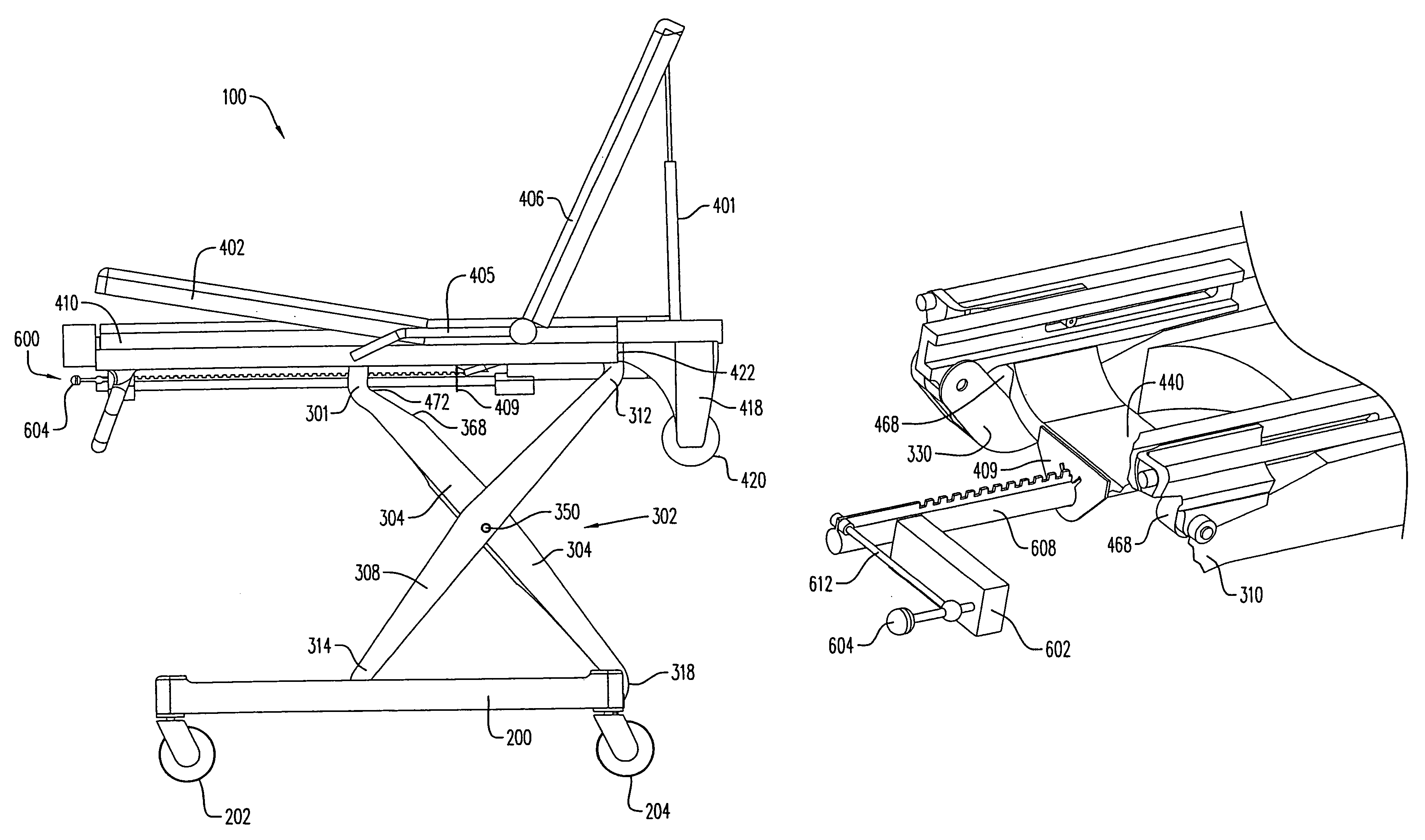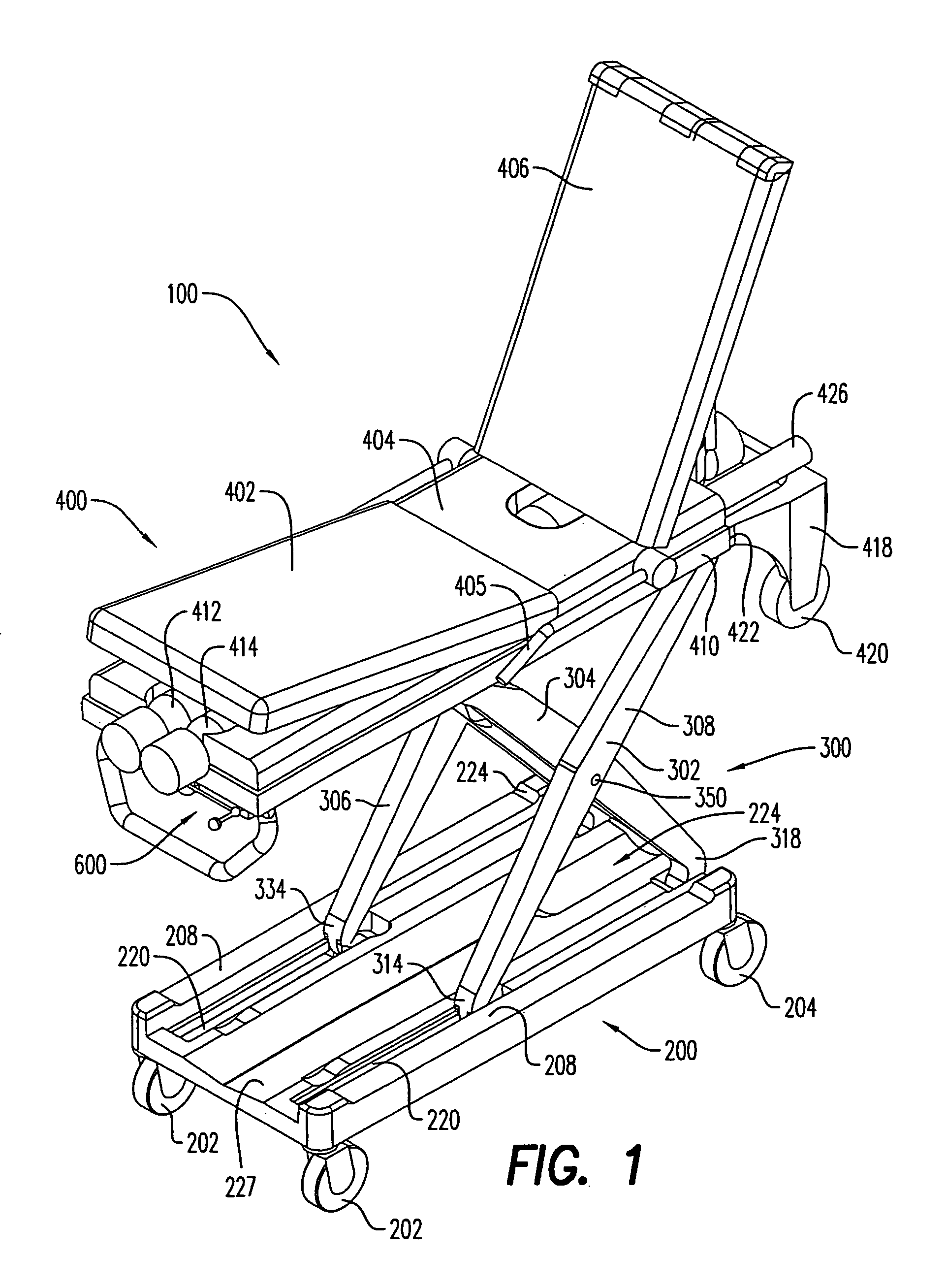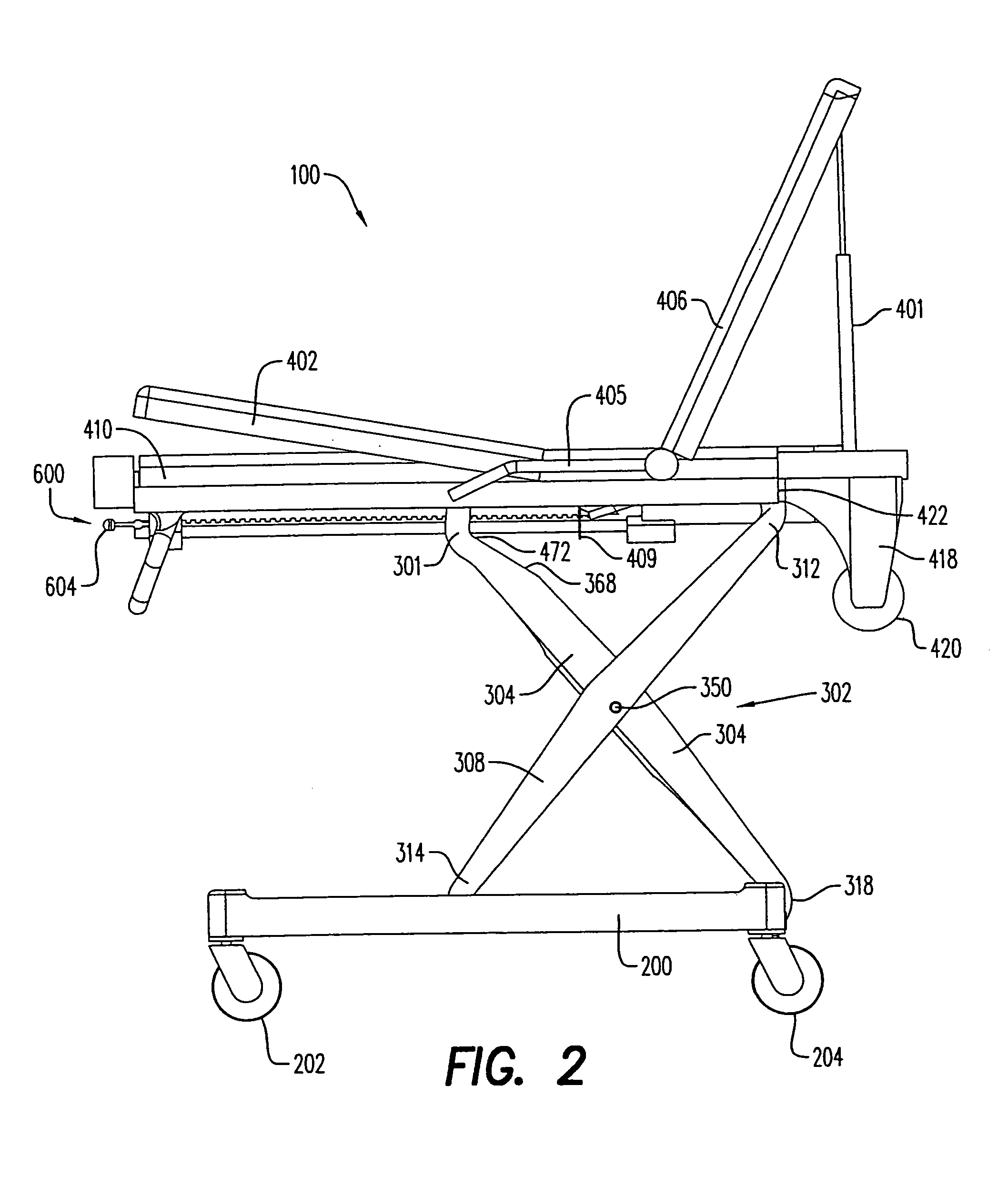Lightweight mobile lift-assisted patient transport device
a mobile, patient technology, applied in the direction of transportation and packaging, tables, applications, etc., can solve the problems of patient drop or rough handling of patients, constant risk to the ems crew and to the patient,
- Summary
- Abstract
- Description
- Claims
- Application Information
AI Technical Summary
Benefits of technology
Problems solved by technology
Method used
Image
Examples
Embodiment Construction
[0034]FIG. 1 illustrates a perspective view of an exemplary embodiment of a mobile lift-assisted device 100. The mobile lift-assisted device 100 is generally used to transport patients from one location to another, while allowing a patient to be placed in a desired position. Furthermore, the mobile lift-assisted device 100 is able to elevate and lower an object or person to a desired height.
[0035]As shown in the exemplary embodiment in FIG. 1, the lift-assisted device 100 generally includes three main structural portions which include: the base 200, the undercarriage 300, and the patient support structure 400. A height adjustment and locking system 600 controls the height of the patient support structure 400.
[0036]Advantageously, most of the components of the base 200, undercarriage 300, and patient support structure 400 are constructed using monocoque or similar construction techniques utilizing carbon-fiber composites or like material.
[0037]The base 200 is the terrain-engaging sec...
PUM
 Login to View More
Login to View More Abstract
Description
Claims
Application Information
 Login to View More
Login to View More - R&D
- Intellectual Property
- Life Sciences
- Materials
- Tech Scout
- Unparalleled Data Quality
- Higher Quality Content
- 60% Fewer Hallucinations
Browse by: Latest US Patents, China's latest patents, Technical Efficacy Thesaurus, Application Domain, Technology Topic, Popular Technical Reports.
© 2025 PatSnap. All rights reserved.Legal|Privacy policy|Modern Slavery Act Transparency Statement|Sitemap|About US| Contact US: help@patsnap.com



